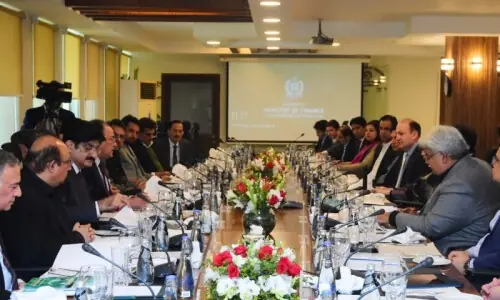
I came to Peshawar back in 1980. In those days, the ‘City of Flowers’ was indeed a fascinating, beautiful and historic place, throbbing with life; its alleyways in the Old City thronged with tribesmen and people of different ethnic backgrounds.
Now the Old City is overcrowded with donkey carts and tongas mixing with motorised transport that belches out poisonous fumes on people and animals alike. The rest of the city is one grand traffic jam during peak hours. Monstrous edifices are being built and magnificent historic buildings are being demolished.
Some years back, a friend in Islamabad called me early one Sunday morning. “I just had a call from a friend. He asked me: ‘Do you know anyone in Peshawar who loves the city and is interested in history?’ Yes, I said, immediately thinking of you”.
“So?” I answered, guardedly.
“Well, it seems they are pulling down the old British barracks in the middle of the Old City. This is urgent because if they do, then Unesco will pull out from making it a National Heritage Site. Gor Katri is the citadel of ancient Peshawar. There is an old fire station there and a Hindu temple among other remains of a Mughal era caravanserai.”
“Well, who is pulling down the old barracks?”
”I don’t know. I don’t know what’s going on or what the real story is.” (Even as I write this article, years later, I still don’t know either.)
Being Sunday, all offices were closed. I called the then tourism minister at his home. He was out.
I called again early the next morning. Mr Imtiaz Gillani sounded duly alarmed and promised to check out the story.
I called my friend. He was not impressed. “Just go there!”
I groaned. So did Janus, my driver.
Half an hour later, we were stifling and perspiring, as we sat in a traffic jam in the old city. My little Suzuki was being pushed by belching rickshaws that were stuck behind horse and donkey carts. People were holding chadors or cloth against their faces to protect themselves from the obnoxious fumes. I stuck my face in my shirt, having forgotten a kerchief. I am allergic to any chemical fumes.
It took us over half-an-hour to travel less than a furlong. We needed to ask someone where the place is. I didn’t have a clue. I knew only the alleyways and bazaars. Janus did not know either. I rolled down my window and asked a choking shopkeeper the way.
We came to one of the last remaining gates of the Old City. Janus asked some policemen. They pointed to behind the gate.
“But, Janus, that looks like a building site.” Janus shrugged his shoulders. “That’s what they said”.
We continued along the wall and turned around to the other side and came through another gate.
The first words I uttered to Janus came spontaneously, without thought. “My God! A demolition site!”
As we drove in, I looked around incredulously. At first I could not understand or relate to what I was seeing. There were old buildings, there were piles of rubble, piles of sand, piles of red bricks, bulldozers, caterpillars, cement mixers, trucks, tractor type trucks belching fumes. There were a number of labourers. What on earth were they doing? Building or demolishing? To my right there was a great monstrous building, which, I was told later, was a marriage hall still under construction.
Janus pulled up. “We shall have to walk.’
I looked at the muddy uneven ground with its piles of rubble, sand and bricks. This terrain really needed my mountain boots.
“Just what are they doing? Janus, for heaven’s sake ask someone!” He did and shook his head. “No-one seems to know.”
“But where are the British barracks?” Different labourers pointed in different directions.
I spied two men sitting at a desk with notebooks in front of them. I went up and asked them what was happening. I was met with distinct hostility. They appeared not to understand English.
I turned to a smartly dressed youth next to me and pointed to a line of old buildings that looked as though they had been polished by a huge razor. “What is that? Is that part of the old British barracks?”
“They were the stables. The barracks were here in the centre.”
I looked at the labourers, in front of the scarred stables, laying newly made red bricks.
“Just what are they doing here in this whole place?”
“Repairing.”
Then I understood. This was an attempt at renovating a historic site. I did not know whether to laugh or cry.
Had I known then the continuation of the story, I most surely would have wept. This was just the beginning of the wholesale destruction of Gor Katri, and historical and archaeological site dating back three thousand years. Buddhists, Mughals, Sikhs, the Colonial British have all passed through the two ancient gates and occupied the area.
When you enter the East Gate, immediately to your right is the archaeological dig. The findings from the excavation had officially established that Peshawar is the oldest living city in this part of Asia. The pit is now filled with rain water and sliding mud from the walls, or so I am told.
Ahead, to the right is the huge illegally constructed wedding hall, owned by a minister, which is still there in spite of a court order to be demolished.
Farther on, to the centre of the area are the gardens where the British barracks used to be. Farther on to the left is the Hindu temple now ‘restored’. Cement is clearly visible.
Just to the left of the gate is the century old British fire brigade station which has not yet been destroyed by a mason’s cement trowel. But, for how long?
Before Azam Khan, former tourism secretary, was transferred, he and his associates wrote a proposal (PC-1) to restore what was left of the area in a correct manner.
That has been superseded by another PC-1 — grossly corrupted and checks and balances for monitoring removed: two police check posts to be constructed, as well as a maulvi’s house, tube wells dug up on the site and one entire section of the ancient site to be covered by a car park…
All illegal and against the Federal Antiquities Act of 1975 and Provincial Antiquities Act of 1997.

































